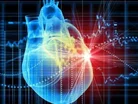[VIDEO] Will GE Healthcare's ViosWorks technology enhance medical imaging?

A new MRI scanning technology that takes images of the human heart and displays them in seven dimensions, has been created by GE Healthcare.
ViosWorks, which is powered by Arterys, is a revolutionary intelligence platform designed to significantly enhance standard medical imaging. The technology was developed by GE Healthcare director of global cardiac magnetic resonance Anja Brau, along with a large team of cardiac specialists, physicists, engineers and software developers at GE Global Research in Munich, Germany.
RELATED TOPIC: Why the NBA has partnered with GE Healthcare to promote sports medicine research
Although ViosWorks is not yet available commercially, GE Healthcare announced the technology at this year’s meeting of the Radiological Society of North America. Once released, ViosWorks may have a big impact on the healthcare industry.
Using this technology, doctors will be able to discover damaged tissue that could complicate future heart attacks if undetected. Furthermore, it could also be used to build in-depth 3D model s of organs prior to surgery, which will help surgeons find out the details of a surgery beforehand.
RELATED TOPIC: TOP 10: Greatest Breakthroughs in Cardiovascular Health That Can Save You In 2015
The software and algorithms that comprise ViosWorks are able to capture data from all seven dimensions — three in space, one in time and three in velocity — and display them in as quickly as eight minutes. Normal MRI scans usually take anywhere from 45 minutes to an hour, and that extra time can be crucial for a patient suffering from a heart attack.
While conventional MRI scans gather data by taking images of one thin slice of tissue at a time, ViosWorks displays high resolution videos of the heart nearly in real-time, which allows doctors to monitor blood flow, the contraction of ventricles and both damaged and scarred tissue.
RELATED TOPIC: How Australia is using 3D printing to improve cranial reconstruction
According to the CDC Foundation, direct medical costs associated with cardiovascular disease could be over $818 billion a year with another $275 billion in lost productivity costs. ViosWorks could potentially reduce the cost of equipment and labor, as four times as many patients can be attended to with one machine.
Click here to read the latest edition of Healthcare Global magazine!





